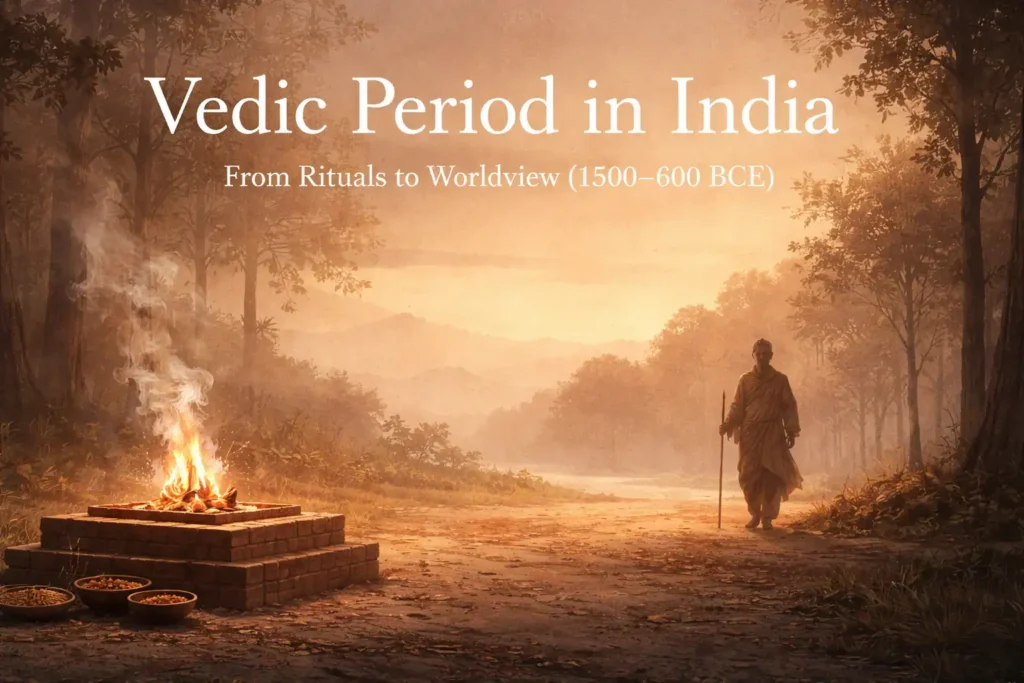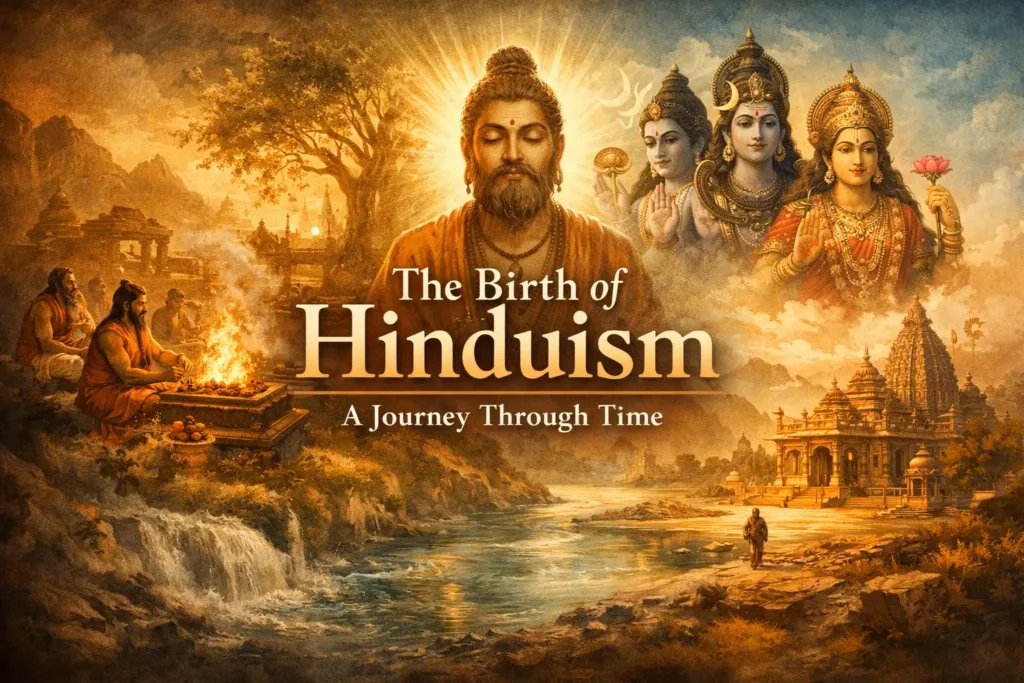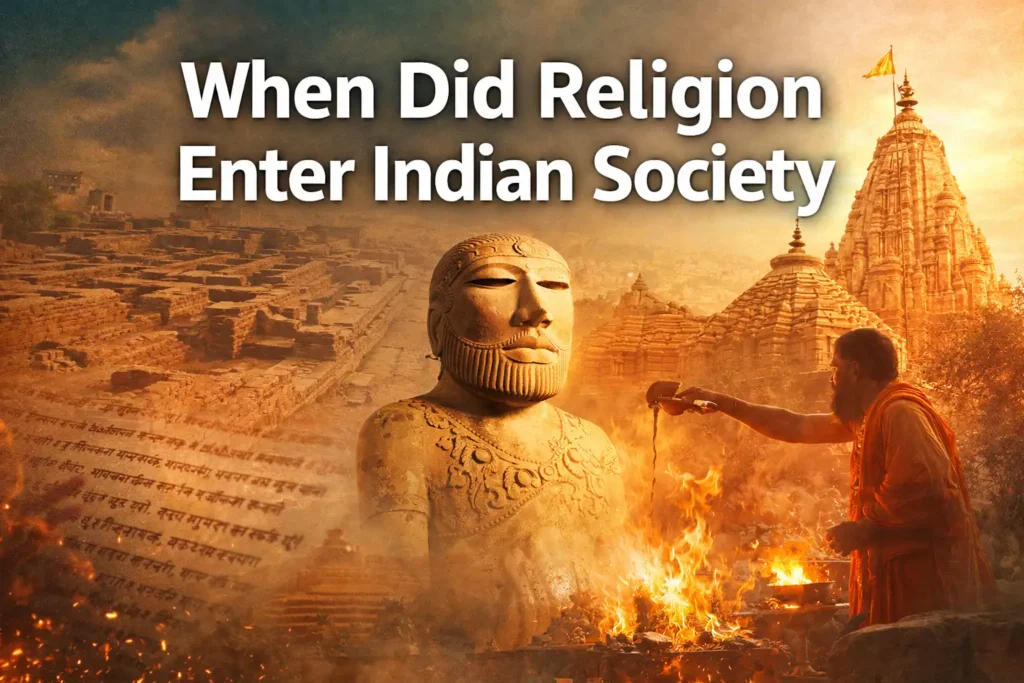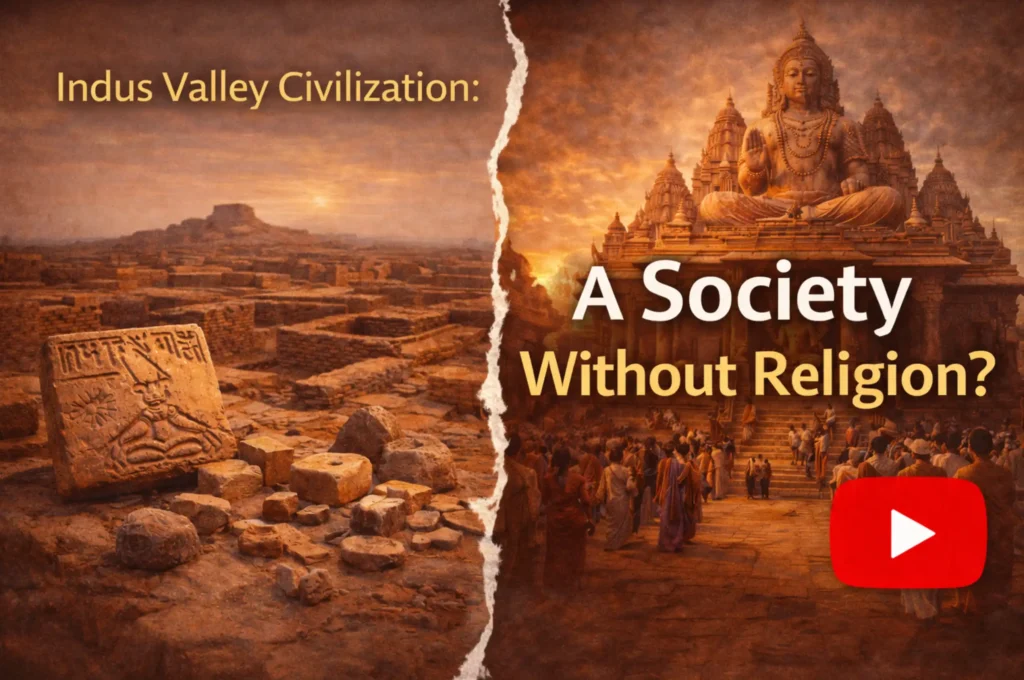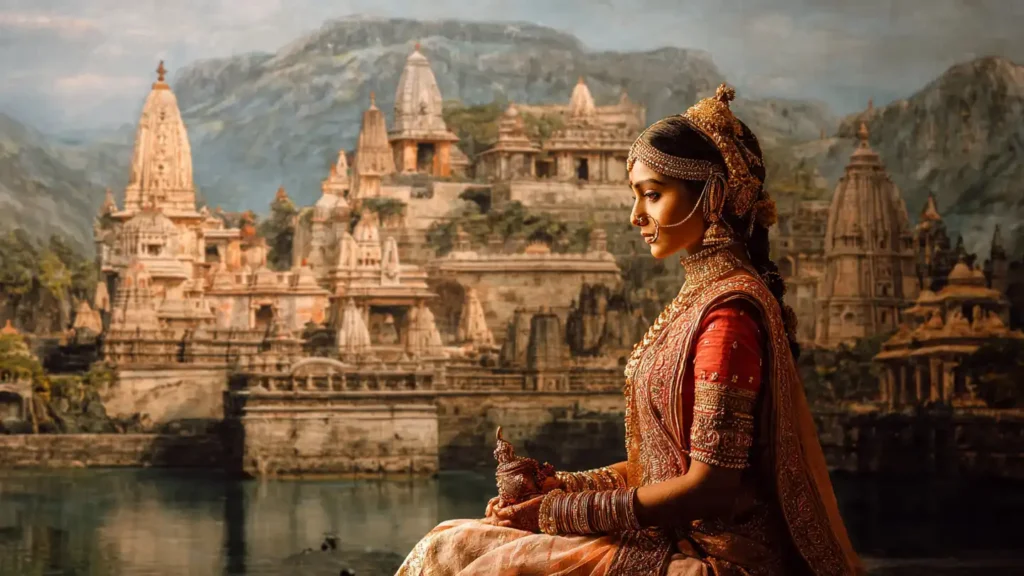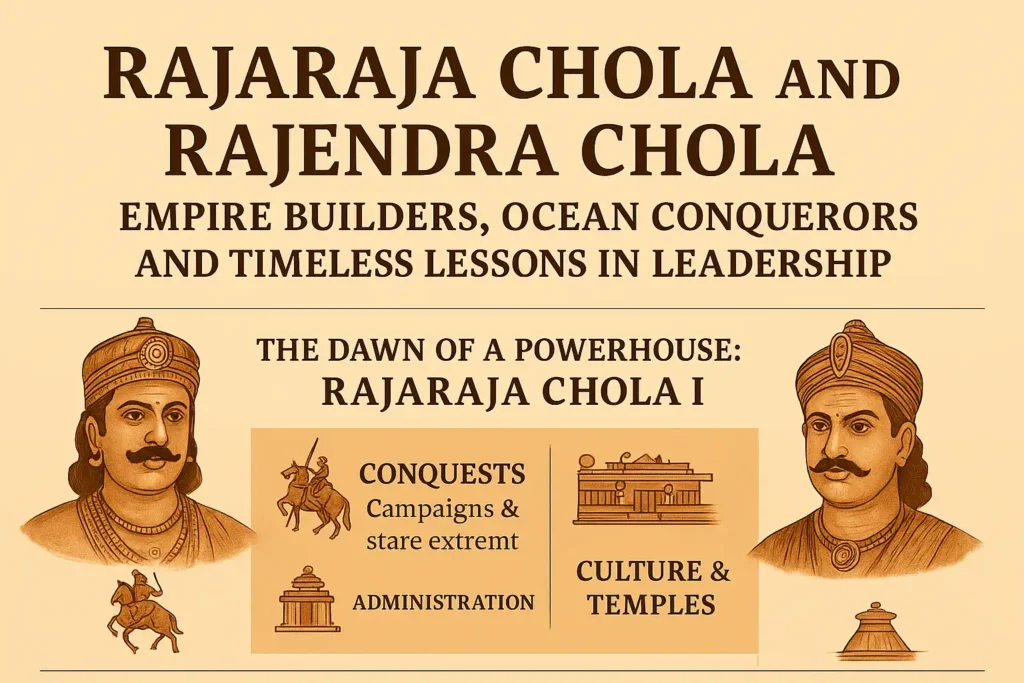
Table of Contents
Keywords: Ashoka the great, Ashoka the king, Expansion of Ashoka’s Kingdom, The Kalinga war and its Impact on Ashoka, Ashoka’s acceptance of Buddhism.
Ashoka the King
Ashoka the Great, also known as Ashoka Maurya, was one of the most prominent emperors in ancient Indian history. He ruled over the Maurya Empire from 268 BCE to 232 BCE. Born in 304 BCE, Ashoka was the son of Emperor Bindusara and the grandson of Chandragupta Maurya, the founder of the Maurya dynasty.
In the early years of his life, Ashoka showed great potential as a warrior and administrator. He played an important role in his father’s administration, commanding a well-disciplined army and leading successful military campaigns. However, his life took a transformative turn after the brutal conquest of Kalinga (present-day Odisha), which resulted in massive loss of life and suffering.
Witnessing the horrors of war and the devastation caused, Ashoka the great was deeply moved. He experienced remorse and sought a path of peace and non-violence. This pivotal moment led to his conversion to Buddhism, which became the guiding force of his reign. Ashoka adopted the principles of Buddhism, emphasizing compassion, tolerance, and social welfare.
As an enlightened ruler, Ashoka embarked on a mission to promote the welfare of his subjects and create a just and righteous empire. He implemented numerous policies aimed at improving the lives of his people. Ashoka’s administration focused on building an efficient bureaucracy, ensuring equal justice, and encouraging religious and cultural tolerance.
One of Ashoka’s notable achievements was the establishment of a system of dhamma, a moral and ethical code based on Buddhist principles. He issued edicts, inscribed on pillars and rocks throughout the empire, which conveyed his message of morality, peace, and social responsibility. These edicts provided guidance on personal conduct, governance, and social welfare.
Under Ashoka’s rule, the Maurya Empire experienced a period of remarkable prosperity. He built extensive infrastructure, including roads, bridges, and irrigation systems, which facilitated trade and communication throughout the empire. Ashoka also promoted education and the spread of knowledge by establishing universities and sending envoys to other regions to exchange ideas.
In addition to his focus on internal affairs, Ashoka sought to foster peaceful relations with neighboring kingdoms and empires. He sent emissaries to various parts of the world, including Egypt, Syria, Greece, and Sri Lanka, to spread the teachings of Buddhism and establish diplomatic ties.
Ashoka’s commitment to non-violence extended to wildlife as well. He declared several areas as protected forests and issued edicts to prohibit the hunting of certain animals. He also promoted animal welfare and encouraged the establishment of hospitals for both humans and animals.
After ruling for several decades, Ashoka the great passed away in 232 BCE. His reign left a lasting impact on Indian history and beyond. His conversion to Buddhism and subsequent propagation of the faith played a crucial role in its spread across Asia. Ashoka’s legacy as a compassionate and visionary ruler continues to inspire people to this day, serving as a testament to the power of compassion and the pursuit of peace.
Expansion of Ashoka’s Kingdom
Ashoka the Great, renowned for his expansive empire, undertook significant military campaigns to expand the Maurya Empire’s boundaries in India. Prior to his conquests, the Maurya Empire already encompassed a large part of the Indian subcontinent. However, Ashoka sought to further strengthen and consolidate his rule by extending his dominion.
Ashoka’s military campaigns began shortly after he ascended the throne in 268 BCE. He launched military expeditions in different directions, expanding the empire’s territory through a combination of diplomacy, strategic alliances, and military force. His conquests covered present-day regions of India, Pakistan, Bangladesh, and parts of Afghanistan.
At its peak, the Maurya Empire under the reign of Ashoka the Great covered a vast expanse of the Indian subcontinent. Ashoka’s empire was the largest in ancient Indian history, spanning over significant parts of present-day India, Pakistan, Bangladesh, and parts of Afghanistan.
When Ashoka ascended the throne in 268 BCE, the Maurya Empire already held considerable territories, extending from the northwestern regions of present-day India to the eastern Gangetic plains. However, Ashoka sought to further expand his empire through a combination of diplomacy and military conquests.
Through military campaigns and strategic alliances, Ashoka the great succeeded in bringing many regions under Mauryan rule. While the exact extent of the empire can vary in historical accounts, it is generally believed that Ashoka’s empire encompassed most of the Indian subcontinent, with the exception of the southern tip of the peninsula.
Some of the major regions that came under the Maurya Empire during Ashoka’s reign include Magadha (the heartland of the empire), Kalinga (present-day Odisha), Gandhara (parts of present-day Pakistan and Afghanistan), Punjab, Bengal, and parts of the Deccan plateau.
Ashoka’s military expeditions not only expanded the empire’s territorial boundaries but also established Mauryan suzerainty over numerous smaller kingdoms and tribes. Through his conquests, Ashoka aimed to consolidate his rule and promote a centralized administration throughout his vast domain.
While the Maurya Empire experienced territorial expansion during Ashoka’s reign, it is worth noting that his focus later shifted from further conquests to governance, welfare, and the propagation of Buddhism. Ashoka’s emphasis on promoting social welfare and moral conduct played a pivotal role in shaping his legacy, even beyond the extent of his empire.
The Kalinga war and its Impact on Ashoka

The story of Kalinga and its impact on Ashoka is a crucial turning point in the life and reign of the great Mauryan emperor. Kalinga was a powerful kingdom located on the eastern coast of the Indian subcontinent, encompassing the present-day state of Odisha. It was known for its rich culture, maritime trade, and military strength.
In 261 BCE, Ashoka embarked on a military campaign to conquer Kalinga and bring it under Mauryan rule. The war between the Maurya Empire and Kalinga was fierce and devastating. The Kalinga forces, though valiant, were ultimately defeated by Ashoka’s superior military might.
However, the conquest of Kalinga had a profound impact on Ashoka. Witnessing the sheer brutality and the aftermath of the war deeply affected him. The sight of the massive loss of life, the suffering of the people, and the destruction caused by the conflict moved him to the core.
Ashoka was overwhelmed by a sense of remorse, guilt, and realization of the futility of violence. He realized that despite the glory of conquest, it brought immense suffering and left a trail of destruction. This introspective period led to a transformative change in Ashoka’s worldview and priorities.
Following the war, Ashoka experienced a spiritual awakening. He embraced Buddhism and adopted its principles of non-violence, compassion, and moral conduct. Ashoka renounced violence and resolved to govern his empire in a way that upheld peace and welfare.
The impact of the war with Kalinga was profound in shaping Ashoka’s policies and reign. He became deeply committed to the principles of Dhamma, a moral and ethical code rooted in Buddhist teachings. Ashoka’s conversion to Buddhism became a guiding force in his governance, and he sought to promote peace, harmony, and social justice throughout his empire.
Ashoka’s remorse for the suffering caused by the war also led him to prioritize social welfare and the well-being of his subjects. He initiated numerous policies aimed at improving the lives of his people, such as building hospitals, constructing roads, and establishing veterinary clinics. Ashoka’s rule became synonymous with compassion and a commitment to the betterment of society.
In commemoration of the war with Kalinga and as a testament to his transformation, Ashoka erected several pillars and rocks inscribed with edicts. These edicts conveyed his message of non-violence, religious tolerance, and moral conduct. They served as reminders of the horrors of war and his dedication to creating a more just and compassionate society.
The impact of the Kalinga war on Ashoka was profound not only on a personal level but also in terms of his governance and legacy. It redirected his focus from conquest and expansion to fostering peace, harmony, and social welfare. Ashoka’s transformation following the war played a crucial role in the spread of Buddhism and left an indelible mark on Indian history.
Ashoka’s acceptance of Buddhism

Ashoka’s acceptance of Buddhism and his subsequent role in spreading the faith played a significant part in shaping his reign and leaving a lasting impact on the spread of Buddhism throughout ancient India and beyond.
After the devastating war with Kalinga, Ashoka experienced a profound spiritual awakening. He renounced violence and embraced Buddhism as his guiding philosophy. Ashoka’s conversion to Buddhism marked a transformative moment in his life and reign, influencing his policies, principles, and approach to governance.
As an ardent Buddhist, Ashoka sought to promote the teachings of Buddhism and propagate its message of peace, compassion, and moral conduct. He actively engaged in spreading Buddhism within his empire and beyond through various means:
- Personal Practice: Ashoka dedicated himself to practicing Buddhist principles in his personal life. He practiced meditation, studied Buddhist scriptures, and engaged in acts of charity and compassion.
- Patronage of Buddhist Institutions: Ashoka provided extensive support to Buddhist monastic institutions. He built viharas (monastic dwellings) and established centers of learning for Buddhist monks and nuns. These institutions served as hubs for Buddhist education, preserving and disseminating the teachings of the Buddha.
- Pilgrimage Sites: Ashoka identified and developed major Buddhist pilgrimage sites associated with the life of the Buddha. He erected stupas and other structures to mark these sacred sites, making them accessible to Buddhist pilgrims.
- Sending Buddhist Missions: Ashoka dispatched emissaries and envoys to various regions to spread the teachings of Buddhism and establish diplomatic relations. These missions traveled to neighboring kingdoms, as well as regions outside the Maurya Empire, such as Sri Lanka, Egypt, Syria, and Greece. The envoys carried Buddhist scriptures, artifacts, and teachings, contributing to the expansion of Buddhism beyond India’s borders.
- Edicts and Inscriptions: Ashoka’s edicts, inscribed on pillars and rocks throughout the empire, played a crucial role in spreading Buddhism. These edicts conveyed Ashoka’s commitment to non-violence, religious tolerance, and ethical conduct. They also served as public proclamations of his adherence to Buddhist principles and his efforts to promote the well-being of his subjects.
- Cultural Assimilation: Ashoka’s policies fostered religious tolerance and cultural assimilation. He respected and supported other religious traditions, promoting a sense of harmony and coexistence. This inclusive approach created an environment conducive to the spread of Buddhism and the exchange of ideas.
Ashoka’s personal commitment and patronage of Buddhism played a vital role in its expansion. The efforts he made during his reign significantly contributed to the spread of Buddhism not only within his empire but also in neighboring regions and beyond. Ashoka’s conversion to Buddhism and his active role in its propagation remain a testament to his legacy as a compassionate and visionary ruler.
Did Ashoka force Buddhism on people of his kindgom?
While Ashoka actively promoted Buddhism and played a significant role in spreading its teachings, historical records do not indicate that he forced Buddhism upon the people of his kingdom. Ashoka’s approach to religion and governance was marked by a spirit of religious tolerance and inclusivity.
Rather than imposing his own beliefs, Ashoka encouraged the coexistence of different religious traditions within his empire. He respected and supported various faiths, recognizing the diversity of religious practices among his subjects. Ashoka’s inscriptions and edicts emphasize the importance of religious freedom and the need to respect and honor all religious communities.
Ashoka’s patronage of Buddhism was characterized by providing support and resources to Buddhist institutions, such as monastic orders and centers of learning. He built viharas (monastic dwellings) and made provisions for the welfare of Buddhist monks and nuns. However, he also extended his support to other religious communities, such as Jainism, and promoted their well-being alongside Buddhism.
While Ashoka the great personally embraced Buddhism and practiced its teachings, he did not impose his faith on his subjects. His focus was on promoting moral conduct, social welfare, and the principles of non-violence and compassion, which he believed were in line with Buddhist teachings. Ashoka encouraged his subjects to adopt ethical behavior and adhere to principles of Dhamma, a moral code based on righteousness, irrespective of their religious affiliation.
It’s important to note that historical records regarding the specific details of Ashoka’s reign can be limited, and there may be variations in interpretations of his policies. However, the prevailing view is that Ashoka’s approach to religion was characterized by tolerance and a desire for peaceful coexistence rather than forced conversion.
Summary : Ashoka The Great (Ashoka the King)
Ashoka the Great was a remarkable ruler who underwent a significant change of heart during his reign. Initially, he was known for his military prowess and expansionist ambitions, but a transformative moment occurred after the brutal war with the kingdom of Kalinga.
Ashoka’s change of heart came as a result of witnessing the immense suffering and devastation caused by the war. Overwhelmed by remorse and the realization of the futility of violence, he renounced warfare and embraced Buddhism as his guiding philosophy.
As a ruler, Ashoka implemented policies that aimed to promote the welfare and well-being of his subjects. He focused on justice, social welfare, and religious tolerance. Ashoka’s governance emphasized non-violence, compassion, and moral conduct. He sought to create a just and harmonious society by applying the principles of Dhamma, a moral and ethical code based on Buddhist teachings.
Ashoka’s impact as a ruler was marked by several significant initiatives. He built extensive infrastructure, including roads, bridges, and hospitals, to improve connectivity and healthcare. Ashoka promoted education and the exchange of knowledge by establishing universities and sending envoys to other regions. He also focused on the protection of wildlife, including the establishment of protected forests.
Furthermore, Ashoka played a pivotal role in spreading Buddhism. He actively propagated Buddhist teachings and principles, both within his empire and beyond its borders. Through his patronage of Buddhist institutions, support for monastic orders, and the dispatch of missions to neighboring regions, Ashoka contributed to the growth and spread of Buddhism, making it one of the major religions of Asia.
Overall, Ashoka’s change of heart transformed him from a conqueror to a compassionate and enlightened ruler. His commitment to non-violence, social welfare, and the propagation of Buddhism left an enduring legacy. Ashoka’s reign serves as a testament to the power of introspection, transformation, and the potential for rulers to prioritize the well-being of their subjects.
===============
Read More Articles: Swami Vivekananda: A Beacon of Spiritual Enlightenment and Social Transformation\
===============
Watch videos on our YouTube Chhannel: ThePoemStory – Meditation and Spirituality

